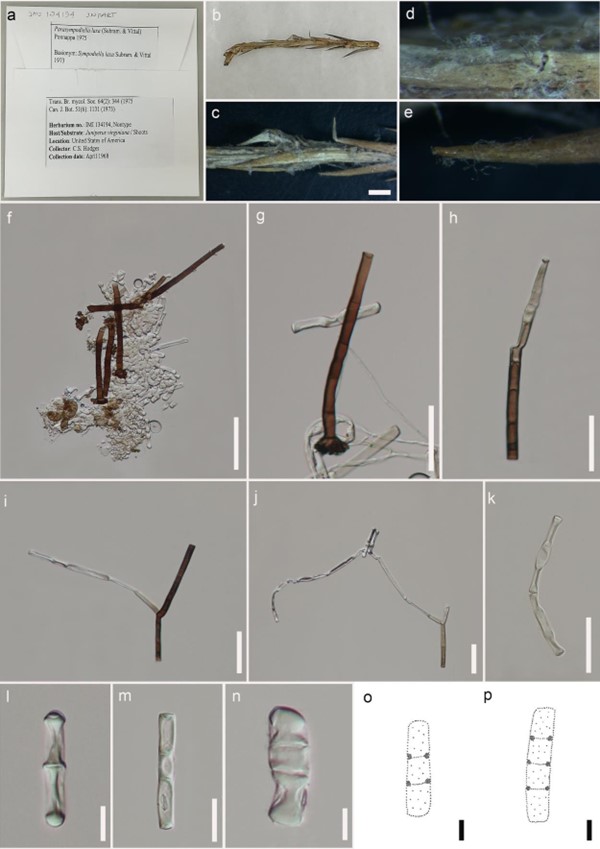Parasympodiella Ponnappa, Trans. Br. mycol. Soc. 64(2): 344 (1975).
MycoBank number: MB 820298; Index Fungorum number: IF 820298; Facesoffungi number: FoF 05188; 9 morphological species (Species Fungorum 2020), 4 species with sequence data.
Type species – Parasympodiella laxa (Subram. & Vittal) Ponnappa
Notes – Parasympodiella was introduced by Ponnappa (1975), with P. laxa as the type species. The latter species was earlier placed in Sympodiella (Ponnappa 1975). However, whereas Sympodiella species have small conidiophores, up to 280 μm along with terminal or subterminal conidiogenous cells which give rise to conidial chains reaching up to six conidia, Parasympodiella species have larger conidiophores, reaching up to 700 μm, together with conidiogenous cells residing along the conidiophore stipe at irregular distances and conidia being produced in ever extending loose chains (Kendrick 1958). Parasympodiella includes distinct and solitary conidiophores with conidiogenous cells which extend sympodially and produce catenate, cylindrical, thallic conidia when the fertile hyaline branches disarticulate, characters which distinguish this genus from similar genera such as Polyscytalum (Riess 1853), Sympodiella (Kendrick 1958), Bahusakala (Subramanian 1958) and Neoscytalidium (Crous et al. 2006a). Parasympodiella laxa is illustrated in this entry.

Figure 189 – Parasympodiella laxa (Material examined – USA, shoots of Juniperus virginiana, April 1968, C.S Hodges, IMI 134194; o, p redrawn from Cheewangkoon et al. 2009). a-c Herbarium material. d, e Appearance of colonies on host substrate. f Mount of colonies. g Conidiophore. h-j Conidiophores, conidiogenous cells and conidia. k Chain of conidia. l-p Conidia. Scale bars: c = 1 mm, f-i, k = 100 µm, j = 50 µm, l, n = 20 µm, m = 30 µm, o, p = 10 µm.
Species
